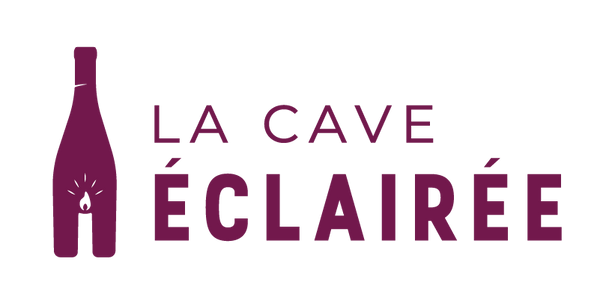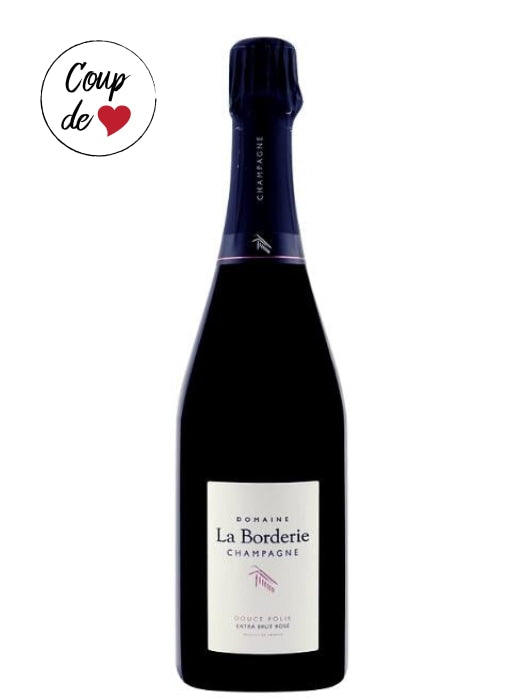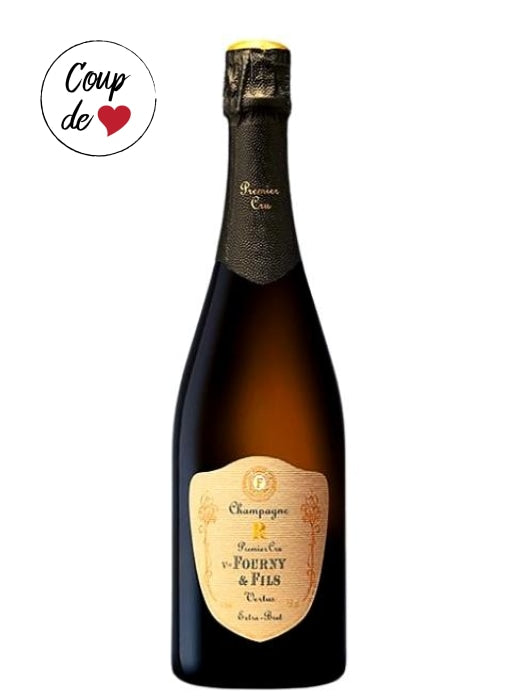The Champagne terroir
Now that we have a better understanding of the history of our famous sparkling wine, let's analyze the Champagne terroir.
First of all, in Champagne, the climate is rather cold and the soils are clay-limestone. Chalk is often highlighted here to explain the freshness and minerality of wines, two key characteristics of our favorite sparkling wine. The latter also allows a fantastic water regulation: when it rains too much, the excess is absorbed and redistributed the following year, when it is too dry, this limestone plays a role of sponge and keeps water underground.
On these soils, 3 grape varieties represent almost all of the grape varieties: pinot noir (38% of the vineyard), the pinot meunier (32%), as well as chardonnay ( 30%). Other varieties such as pinot gris, arbane
And what about Champagne rosé in all this? Well, the oldest traces of its creation date back to the year 1764 when the maison Ruinart developed a rosé of maceration (the juice coloring on contact with the black skins of the grapes) called "oeil-de-perdrix". Nevertheless, the more common method today of blending a small proportion of red wine with a majority of white wine to create a rosé wine (a process only authorized in Champagne and nowhere else!) was not officially created only in 1818 by Nicole Clicquot (Champagne Veuve Clicquot).
Making Champagne
Now let's take a look at the important steps in making our bubbles. Champagne is a wine that goes through two fermentations (you know, that process of converting sugar from grapes into alcohol). Once the first fermentation has been carried out, the wines obtained here are called "clear wines" and revolve around 11% alcohol. At this stage, the bubbles do not yet exist and the acidity of these juices being very high, they are not very pleasant to taste.
In order to be able to display the mention "Champagne", clear wines will therefore have to know ageing on slats, that is to say a period of at least 15 months (for a classic champagne) or 36 months minimum (for a vintage champagne) where they will be kept in the cellar and bottled horizontally. And it is during the first weeks of this aging on laths that our effervescence will form! It is indeed at this moment that the winemaker will add to the still wines “a liqueur de draw”, a mixture of wine, sugar (often cane ) and yeasts. The latter will then again convert the added sugar into alcohol, while releasing carbon dioxide (CO2) which will this time be trapped in the bottle.It is therefore the second fermentation in the bottle that gives our Champagne its bubbles as well as its final alcohol content of around 12.5%.
Beyond the creation of this effervescence (called "prise de mousse"), aging on laths is a crucial step in order to obtain a high quality champagne: it is thanks to these long months of rest in the bottle that the wines come into contact with the lees (dead yeasts remaining in the bottle after having generated the second fermentation) acquire a patina and gain in complexity, sometimes giving these gourmet aromas of toast and hazelnut.
Finally, our sparkling wine will be "disgorged" (we expel the lees from the bottle in order to obtain a clear liquid and not potentially make start a new fermentation) and add "the liqueur de dosage ", a mixture of wine and sugar defining the style of champagne: Brut nature, Extra- gross, Gross etc. If you want to find all the information about these mentions, don't hesitate to take a look at this article that I wrote about sweet wines where everything is explained.
Here we are, our champagne is finally ready to be sold and enjoyed in good company!
 Example of bottles being aged on slats
Example of bottles being aged on slats
Why is Champagne so expensive?
First of all, the price of grapes in Champagne varies between €4 and €7/kg depending on the plots and vintages. Knowing that it takes on average 1.2kg of grapes for a bottle, so here we are already around 8€! If the raw material is so expensive, this is partly due to the high price of land as well as the fact that every year, The players in the sector set the authorized yields among themselves in order to adjust production according to world demand (so as not to lower prices too much). Finally, the great power of brands like Ruinart, Moët & Chandon , Dom Pérignon or Roederer is quite unique in the French wine landscape. Champagne is, thanks to these groups (particularly LVMH), a particularly well-marketed product that conveys a luxury image that benefits the entire sector.
As other factors, we could also mention the manual harvest which is mandatory in Champagne or the time required to develop the product because these long years in the cellar obviously impact the final cost. But these elements are ultimately common to other products. Let's take the example of Vouvray Brut from Domaine Pinon: its production method is the same as a champagne (traditional method), the harvest here is also manual and the resting time in the cellar (aging on slats) is 30 months (same or even longer than some champagnes). The remaining elements explaining the price difference between the two products are therefore far more valued land in Champagne, a certain rarity voluntarily sought as well as the power marketing making Champagne a luxury product.
How to properly taste a Champagne ?
To conclude, let's get to the tasting part! First of all, most champagnes we buy are meant to be drunk within 3-5 years. They are indeed not intended to be kept and if they are not less pleasant at the end of this period, they will not gain in complexity either.
Other cuvées are nevertheless made for laying down. We are talking here about certain vintage champagnes (such as Blanc des Millénaires from Charles Heidsieck) or other large bottles often sold at high prices. There is no universal rule for determining when to open these bottles as it will depend on the style of the champagne, its quality as well as the vintage.
The best thing to do in this case would therefore be to seek advice from your favorite wine merchant (La Cave Éclairée of course ) or directly to the winemaker concerned. Nevertheless, although no precise aging period can be defined in advance, a wait of 15 to 20 years will already be a good proof of patience! Beyond that, champagnes often lose a lot of their effervescence and can turn to aromas of honey, undergrowth and humus. Personally I love it, but not everyone does!
Regarding the serving temperature, it is generally agreed to serve our bubbles between 8° and 10°C. Below, the cold will have an anesthetic effect on the taste buds and beyond, we will appreciate less the lively and refreshing character of champagnes.
Finally, (and I know this is going to be hard to hear) but it's best not to serve champagne in classic flutes or coupes. If you only have that in stock at home, do not throw away all your crockery but a cut being by definition very flared, it will not be ideal for best feeling the aromas on the nose and will make you lose effervescence more quickly. with champagne once served. As for the flute, it will bring up too much carbon dioxide present, which can sometimes "sting" our nose (this phenomenon is called "the carbonic sting"). Therefore, a wine or champagne glass with an open bottom but a slightly tapered neck will be perfect!
There, you now know almost everything about our effervescent national! To celebrate all this new knowledge, all you have to do is open a beautiful bottle...and you know which region to turn to !
See you soon at La Cave Éclairée!































1 comment
Super intéressant ! Merci pour cet article